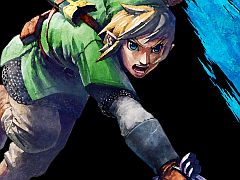Video Gamer is reader-supported. When you buy through links on our site, we may earn an affiliate commission. Prices subject to change. Learn more
There’s 50 minutes left of E3 2010. My interview with the legendary Warren Spector had run late, and I found myself running to the South Hall of the convention centre with the intention of playing one last game. That game was Zelda: Skyward Sword, which was finally revealed in Nintendo’s press conference earlier in the week. Now I’m not the biggest Zelda fan in the world, but if VideoGamer.com had left E3 without having played it, there’d have been a lot of very unhappy bunnies in our otherwise joyous community. Upon arriving at the Nintendo booth, panting, wheezing and aching from limb to limb, I was welcomed by a queue of truly epic proportions. It looped around the entirety of Nintendo’s booth (which is no short distance, I can tell) you), and at my best estimate, would have taken around 3 hours to endure. There was no chance in hell I was seeing Zelda on this occasion.
The Gods of Nintendo took pity on me this particular day, however, and sent down an angel from their pixelated white clouds to help me out. That angel was the one and only Charles Martinet, the man who lends his vocal talents to the portly Italian plumber. How did he help me? I hear you cry – well, before my arrival at the Ninty booth, we’d arranged a queue jump (which us media types are entitled to). The problem was that the people who would normally answer such a request had all gone home, and so Charles Martinet, who just so happened to be milling about behind the scenes at the time, was asked to chaperone us to the front of the queue.
And that is the fairy tale explanation of how I came to play Zelda. The story of our exploits with Charles goes on, but this is not the time to recount it. No, the focus of this prose is Zelda, but I hope you’d agree that it was a fantastically cool way to be introduced to the game. With the Wii Remote and Nunchuck in hand, I was able to lay to rest any worries about the unresponsive and unruly controls seen in the Nintendo press conference. It was common knowledge at this point that these issues were the result of a room full of journalists and their interfering wireless devices, but it was nice to see first-hand how the game was plagued by no such problems.
The biggest advantage Skyward Sword has over its predecessor concerns these controls. Where Twilight Princess had players waving their arms around in a way that barely correlated with the action on screen, Wii Motion Plus this time around means that Link’s sword skills are brought to life with 1:1 precision. While sword moves are mapped exclusively to the motion controls, Link’s shield can be raised with a quick waggle of the Nunchuck. From here, thrusting the Nunchuck forward will prompt Link to ram his shield into his foe. The B button brings up your item wheel, where new weapons can be equipped with a quick flick of the analogue stick. Everything else is essentially the same as it was in Twilight Princess, except the UI on the whole feels much tighter.
Long before I’d turned my attentions towards the controls, I’d been trying to work out what I made of the visuals. Although the game was an early build, and a little rough around the edges, its aesthetic style was incredibly pleasing on the eye. A helpful Nintendo chap that was guiding me through the demo described it as an ‘oil painting brought to life’, which is pretty bang on the money as far as I’m concerned. Hyrule is painted with a very vivid colour palette, with an overall style lurking somewhere between Twilight Princess and Wind Waker. That said, the more adult character models mean that the game bears a closer resemblance to the former. While Twilight Princess could be perceived as somewhat drab in places, Skyward Bound is the exact opposite: a vivid explosion of colour in combination with clever use of shaders.
My time with the game was restricted to around ten minutes, which as I’m sure you can appreciate is no way near long enough to form much of an opinion. The controls are great (if you’re the type of gamer that gets on with motion controls), the UI is fantastic, and the game oozes with the same charm that we’ve come to expect from the series. My worry is, however, whether the game brings enough new mechanics to the series. Obviously I only saw a small portion of the overall experience, but that portion was the same rehashed gameplay that we’ve been playing for years – other than the enemies that need to be sliced in a certain way. Don’t get me wrong, it does what it does very well, but so did Ocarina of Time twelve years previously. For me to remain enthusiastic about the game when it’s finally released next year, there’s going to have to be something fundamental that sets it apart from its predecessors.
The Legend of Zelda: Skyward Sword is out 2011 exclusively on Nintendo Wii

/https://oimg.videogamer.com/images/5a70/the_legend_of_zelda_skyward_sword_16.jpg)